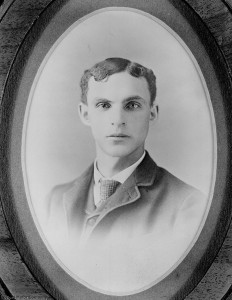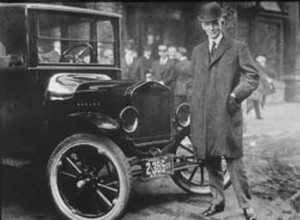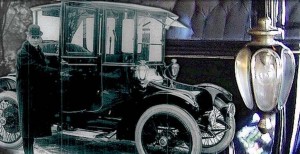He died much as he was born, by lamplight on the Fairlane Estate near the farm where he was raised. But much changed during his 83 years, and Henry Ford had a hand in much of that transformation.
His name can still be found on millions of automobiles produced in plants around the world, from Beijing to Britain and, of course, Detroit. And while the assembly line concept he pioneered has gone through major updates it remains the heart of modern manufacturing. He was a global visionary and an advocate for peace who also helped supply the American military machine through two world wars.
Henry Ford might have helped put America on wheels and helped make modern consumerism possible, but he also tinkered with social engineering during an era when millions of Americans moved from farms to factories. Henry Ford’s grand goals were tarnished, in the eyes of many by his naiveté and anti-Semitism.
“Henry Ford was a very complex man and someone who was very contradictory in many ways,” says Bill Chapin, head of the Automotive Hall of Fame which is located near Ford Motor Co. headquarters in Dearborn, Michigan and on the campus of the Henry Ford, a museum devoted to Americana and American ingenuity.
Today marks the 150th anniversary of Ford’s birth on a farm in Dearborn during an era when the typical American wasn’t likely to ever venture much further than 25 miles from their home.
(The familiar Chevrolet bowtie recently turned 100 – but its origin remains a mystery. Click Herefor the story.)
Ford’s interest in things mechanical was triggered by a gift from his father, an Irish immigrant who presented the young boy with a pocket watch. Then 15, he repeatedly took the timepiece apart and put it back together. A year later, he left the farm for a job in Detroit as a machinist’s assistant, later in life admitting, “I never had any particular love for the farm.” Even when he did briefly return to help his father his real interest was with the farm machinery, including a portable steam engine.
By the time he was 30, Ford was a chief engineer with the Edison Illuminating Co., a job that would create a fortuitous and long-running friendship with the legendary inventor of the light bulb and phonograph. Indeed, Thomas Edison encouraged the young tinkerers experiments. Ford built his first car, the Quadricycle, in 1898, and soon formed his first automobile company.
While many think of Ford – and the Model T closely identified with his name – as an overnight success, the reality was quite different. His first two firms, the Detroit Automobile Company, and the Henry Ford Company, were dismal failures. And Ford might have drifted into obscurity if he didn’t win a 1902 road race against the legendary Alexander Winton with a handmade race car named the 999.

Young Henry Ford gained an interest in things mechanical thing when his father gave him a pocket watch at 15.
Ford convinced a group of investors including the Dodge Brothers to back him with $28,000 of capital to create the new Ford Motor Co.
The new venture created a series of vehicles before, in 1908, it launched the first Model T. And counter to conventional wisdom, the original “Tin Lizzy” was built by hand. It was 1914 before Ford swiped a concept from the meat-packing industry and turned it upside-down. Instead of pushing carcasses down a line where workers were assigned to slice off specific cuts of meats, the workers at the Highland Park Assembly Plant were assigned to put specifics pieces of the Model T in place, over and over, all day.
The strategy allowed Ford to slash costs, cutting the cost of the little car from an initial $800 to as little as $200 in its final years of production.
Even so, it made Ford wildly rich, Forbes magazine estimating in 2008 that his net worth would by then have equaled $188 billion.
It gave Ford the opportunity to tinker with plenty of other ideas. He was an early aerospace pioneer. The world’s first airport hotel still stands in Dearborn, though the adjacent runway used by the Ford Tri-Motor is now a Ford Motor Co. test track. Ford ultimately abandoned his dream of building a “Flying Flivver,” the aircraft version of the Model T, when a close friend and company test pilot died in a crash.
(Remembering Phil Caldwell, the “bean-counter” who saved Ford. Click Here for the story.)
With the money came plenty of power and prestige. Ford became outspoken in his views about America and its people. He was famous for bumping wages to as much as $5 a day but he also required his workers to follow a strict ethical code. To qualify for bonuses could mean having one’s home inspected to ensure the family lived up to Ford’s expectations.
The one-time farm boy had the ear of the public – as well as presidents – and became increasingly opinionated. He was an avowed pacifist at the start of World War I, even launching an ill-conceived peace mission. Yet, after the U.S. did enter the fighting, Ford’s new Rouge River assembly complex quickly geared up, even producing new PT boats.
Perhaps his biggest embarrassment came from Ford’s open anti-Semitism. He financed a series of tracts such as The International Jew, and eventually found himself in a court battle that sorely tarnished his reputation. Ford also found himself battling trade unions that wanted to organize his company, the fledgling United Auto Workers Union eventually succeeding after pictures of Ford corporate goons beating UAW organizers on a bridge to the Rouge plant were published around the world.
On the business front, Ford’s near monopoly on the mainstream automotive market began to slip in the mid-1920s due to his reluctance to abandon the Model T. General Motors’ new Chairman Alfred P. Sloane took advantages of Ford’s oft-published dictum that he would offer cars “in any color as long as it’s black,” and by providing a range of GM models – and colors – became the global sales leader for the next eight decades.
After son Edsel Ford died unexpectedly in May 1943, Henry Ford stepped back into day-to-day management of the automaker – to nearly disastrous results. Worried about war production, the Roosevelt Administration even worked up a plan to take over the company. In the end, the War Department released the automotive founder’s grandson, Henry Ford II, from Navy duty. Better known as the Deuce, he ultimately shoved his grandfather aside and saved the family firm. (A decade later, Ford Motor Co. went public, though the family still retains a controlling interest.)
His health failing, Henry Ford finally accepted retirement in September 1945, settling into his home, the sprawling Fairlane Estate that by then not only included the original Ford farm but thousands of surrounding acres.
On April 7, 1947, a howling storm blasted through Detroit, knocking out power at Fairlane. Only a few oil lamps were left to cut through the gloom as Henry Ford died of a cerebral hemorrhage.
The sesquicentennial of Henry Ford’s birth comes a year before two other important milestones for the firm he founded. Next year will be market by the 100th anniversary of the first moving assembly line and the 50th anniversary of the Ford Mustang.




Henry made great contributions to society but as with most ambitious men he allowed his ego to take control as he achieved success and that more than tarnished his reputation and hurt those around him.